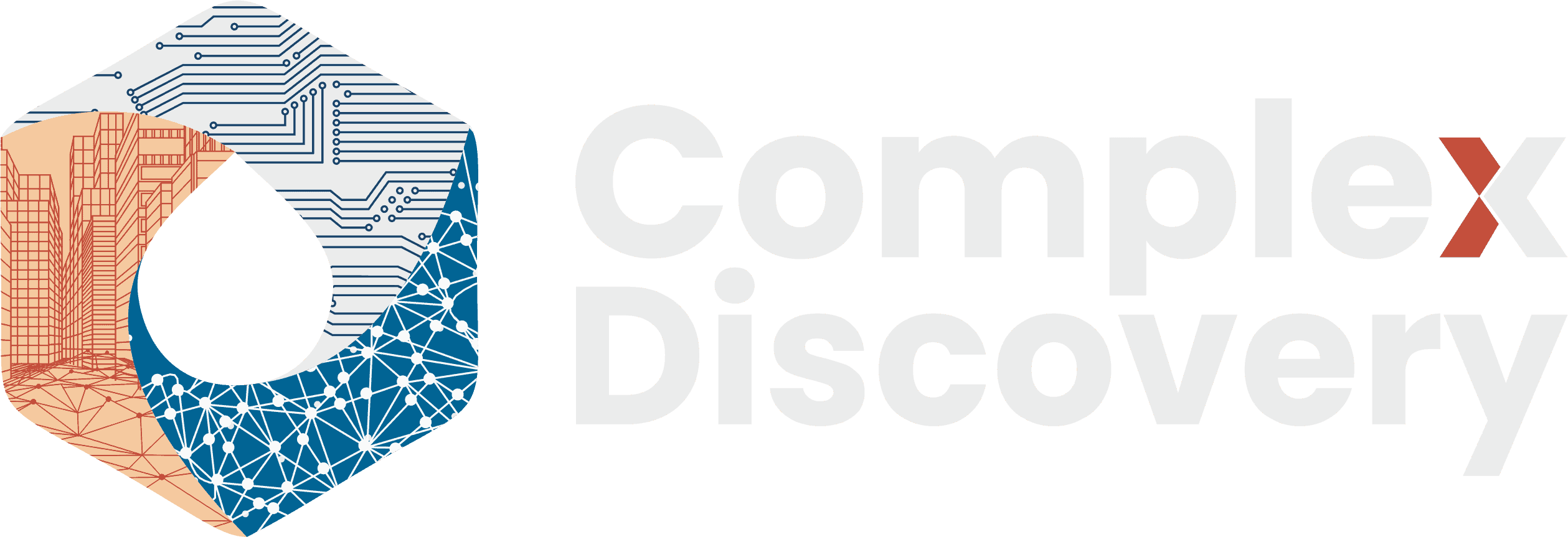Editor’s Note: Europe’s ransomware surge signals a sharp escalation in both attack volume and complexity. CrowdStrike’s latest threat intelligence report outlines how criminal and nation-state actors are now operating in parallel—sometimes with overlapping infrastructure—making the region one of the most targeted and tactically complex in the world. This convergence of financially motivated ransomware groups and strategic espionage campaigns is reshaping how organizations must prepare and respond.
For cybersecurity, information governance, and eDiscovery professionals, the findings are especially relevant. The compression of attack timelines to 24 hours challenges traditional detection and response workflows. The use of data theft alongside encryption introduces regulatory risk and breach notification pressure from the outset. And for legal discovery teams, the potential compromise of cloud environments and credential systems raises serious concerns about data integrity, access control, and chain of custody.
This report offers a detailed view into how threat actors adapt quickly—and why resilience planning must account for both technical disruption and legal exposure.
Content Assessment: Europe's Ransomware Crisis: Converging Criminal and Nation-State Threats Redefine the Risk Landscape
Information - 94%
Insight - 93%
Relevance - 94%
Objectivity - 93%
Authority - 95%
94%
Excellent
A short percentage-based assessment of the qualitative benefit expressed as a percentage of positive reception of the recent article from ComplexDiscovery OÜ titled, "Europe's Ransomware Crisis: Converging Criminal and Nation-State Threats Redefine the Risk Landscape."
Industry News – Cybersecurity Beat
Europe’s Ransomware Crisis: Converging Criminal and Nation-State Threats Redefine the Risk Landscape
ComplexDiscovery Staff
Europe faces an unprecedented collision between criminal innovation and state-backed aggression. As ransomware victims on the continent jumped nearly 13 percent year-over-year to record highs, a new CrowdStrike threat landscape analysis reveals the region has become a digital battleground where financially motivated extortionists, state-sponsored operatives, and hybrid threat actors operate with alarming speed and sophistication. The convergence isn’t coincidental—it’s driven by evolution in underground criminal marketplaces, the maturation of Malware-as-a-Service ecosystems, and geopolitical turbulence that has redefined intelligence collection priorities across Russia, China, North Korea, and Iran.
European Organizations Face the Second-Highest Global Ransomware Targeting
European organizations accounted for nearly 22 percent of global ransomware and extortion victims—second only to North America—according to CrowdStrike’s 2025 European Threat Landscape Report released November 3 during Fal.Con Europe 2025 in Barcelona. Since January 1, 2024, more than 2,100 European-based victims have been named on data extortion leak sites, representing a stark indicator of how attractive the region has become to ransomware gangs. The United Kingdom, Germany, Italy, France, and Spain bore the brunt of targeting, with 92 percent of incidents involving both file encryption and data theft. This combination maximizes pressure on victims by threatening both operational disruption and regulatory exposure.
The profitability calculus behind European targeting is straightforward: the continent hosts five of the world’s 10 most valuable companies, and big-game hunting (BGH) adversaries size ransom demands relative to organizational revenue, making European entities inherently lucrative targets. Additionally, attackers have weaponized Europe’s robust regulatory framework—specifically General Data Protection Regulation (GDPR) penalties—threatening victims with data breach notifications as a coercion tactic.
Speed As Weapon: The 24-Hour Attack Cycle
Perhaps more alarming than volume is velocity. Adversary group SCATTERED SPIDER has accelerated ransomware deployment to an extraordinary degree, reducing the average time between initial access and encryption from 35.5 hours in 2024 to approximately 24 hours in mid-2025—a 48 percent increase in attack speed. This compression of the attack timeline radically reduces defenders’ window for detection and response, forcing security teams to operate with AI-augmented detection capabilities and proactive threat hunting rather than reactive incident response.
SCATTERED SPIDER’s operational model reflects a troubling trend among Western eCrime actors. Unlike their Russian counterparts, SCATTERED SPIDER operators are based in Western countries, including the United States and the United Kingdom, demonstrating that criminal infrastructure can thrive even within jurisdictions with advanced law enforcement capabilities. In July 2025, the U.K. National Crime Agency announced the arrests of four individuals aged 17 to 20 in connection with attacks on the retail sector. Yet, subsequent arrests in September 2025 of two of those individuals for their role in a 2024 Transport for London incident illustrate the persistence of these threat actors despite enforcement actions.
Underground Ecosystem: The Commoditization of Cybercrime
The sophistication of modern ransomware operations depends on robust, decentralized infrastructure that has become virtually impossible for law enforcement to permanently disrupt. Russian-language forums like Exploit and XSS, alongside English-language platforms like BreachForums, operate as marketplaces where threat actors purchase and lease enabling services with the efficiency of legitimate commerce.
The report documents that 260 initial access brokers advertised network access to more than 1,400 European organizations during the review period. These brokers—operating from forums and encrypted messaging applications like Telegram, Tox, and Jabber—provide the critical first step in ransomware operations, commoditizing what was once a specialized skill. Malware-as-a-Service (MaaS) operators further democratize attack capability by offering ready-made tools, including banking malware, information stealers, and loaders, through subscription, rental, or affiliate-revenue models.
The resilience of this ecosystem reflects its distributed nature and the safe-haven jurisdictions where many operators function with impunity. CrowdStrike noted that, following law enforcement operations such as Operation Endgame and the July 2025 seizure of the XSS forum, MaaS operators remained active, in part because long-standing members operate in territories with minimal enforcement.
Nation-State Convergence: The “Big Four” Accelerate
While ransomware generates headlines, the report reveals a more strategic threat landscape dominated by Russia, China, North Korea, and Iran, each pursuing distinct intelligence objectives but collectively creating unprecedented targeting diversity across European institutions.
Russia’s Dual Strategy: Russia-nexus threat actors maintain overwhelming focus on Ukraine, conducting intelligence collection and destructive operations that support Moscow’s war effort while simultaneously targeting NATO-aligned European states for long-term strategic intelligence. The GRU operates sophisticated credential-phishing campaigns against Ukrainian military and government entities and deploys wiper malware against critical infrastructure. Beyond conflict-specific operations, Russian actors like COZY BEAR have launched large-scale phishing campaigns targeting European defense ministries and government entities, registering more than 180 spoofed domains in October 2024 alone to collect diplomatic and defense intelligence.
A particularly novel Russian tactic involves “throwaway agents”—operatives recruited via Telegram for specific sabotage tasks with deliberate expendability to provide plausible deniability. RENAISSANCE SPIDER, operating under the guise of the “Fire Cells Group” Violence-as-a-Service provider, recruited individuals for arson, assassinations, and infrastructure attacks across Ukraine and its European allies. Between January and September 2025, 17 physical cryptocurrency theft and kidnapping incidents occurred in Europe, with 13 occurring in France, often connected to eCrime communities affiliated with “The Com” English-speaking ecosystem.
China’s Systematic Targeting: China-nexus adversaries demonstrate systematic intelligence collection across healthcare, biotechnology, defense, government, and technology sectors spanning 11 European countries. VIXEN PANDA emerged as the most prolific threat to European government and defense entities, conducting persistent reconnaissance campaigns using operational relay boxes (ORB networks) to probe hundreds of network security devices across multiple European countries. These operations align with Beijing’s strategic interest in monitoring European defense coordination, NATO capabilities, and policy development.
The targeting of healthcare and biotechnology—one of Europe’s most consistently targeted sectors by Chinese actors—reflects Beijing’s prioritization of intellectual property theft and understanding of Western biomedical innovations critical to national health security.
North Korea Expands Beyond Espionage: The Democratic People’s Republic of Korea (DPRK) shifted from primarily espionage activities to include insider threat operations and financially motivated cryptocurrency theft, with a sophisticated infrastructure of laptop farms, freelance falsified profiles, and proxy payments to facilitate operations. LABYRINTH CHOLLIMA impersonated job recruiters on LinkedIn to entice employees at Western defense and fintech companies into downloading trojanized files, subsequently gaining access to cloud environments and diverting cryptocurrency funds.
Iran’s Multifaceted Approach: Iran-nexus actors expanded phishing, hack-and-leak, and distributed denial-of-service (DDoS) campaigns against the United Kingdom, Germany, and the Netherlands, often masquerading as hacktivists to obscure state-sponsored motivations. HAYWIRE KITTEN claimed responsibility for DDoS attacks against a Dutch news organization, while conducting extensive Microsoft-themed phishing campaigns targeting Western organizations in technology, renewable energy, manufacturing, and hospitality sectors across France, Germany, Spain, Switzerland, and the United States.
Implications for Cybersecurity, Information Governance, and Legal Discovery
These convergent threats create cascading implications across cybersecurity, information governance, and legal discovery domains. The 24-hour attack cycle demands that incident response frameworks assume breach scenarios rather than relying on perimeter defense. As the CrowdStrike report recommends, organizations must adopt “intelligence-led defense powered by AI and guided by human expertise” as “the only combination designed to stop cyber threats.”
From an information governance perspective, the dual-threat model—ransomware combined with data exfiltration—creates regulatory exposure beyond immediate operational impact. GDPR penalties weaponized as extortion threats, coupled with actual breach notification requirements, mean that organizations must treat ransomware incidents as simultaneous cybersecurity, privacy compliance, and litigation events.
For legal discovery and eDiscovery teams, these threats present existential challenges to data integrity and chain-of-custody protocols. Compromised infrastructure used for initial access may have already exfiltrated relevant litigation data before encryption occurs. The report’s emphasis on credential phishing and cloud infrastructure exploitation suggests that adversaries may maintain persistent access to discovery repositories, creating unprecedented challenges for litigation support operations that assume data immutability and controlled access.
The proliferation of vishing (voice phishing) campaigns, which the report indicates have been observed in nearly 1,000 incidents globally and are likely to intensify against European entities, means that helpdesk social engineering now represents a direct threat vector to systems housing sensitive litigation materials. Organizations conducting eDiscovery must assume that voice-based authentication bypass and credential harvesting have enabled attacker access to backup systems, hypervisor infrastructure, and credential repositories—the exact attack vectors CrowdStrike documented in European ransomware operations.
Returning to the Digital Battleground
The convergence of criminal innovation and geopolitical ambition described at the opening has materialized across Europe as a multi-layered crisis. The 22 percent share of global ransomware victims, the acceleration of attack timelines to 24-hour cycles, and the proliferation of enabling services through underground ecosystems create an environment in which European organizations face adversaries operating with corporate-grade efficiency. State-sponsored actors amplify this pressure by targeting the same critical infrastructure, government entities, and defense contractors that ransomware gangs pursue, creating scenarios where breaches serve both financial extortion and national intelligence objectives.
For information governance and discovery teams specifically, this means treating threat intelligence integration, incident response readiness, and data integrity verification as discovery competencies equal in importance to search protocols and review workflows.
News Sources
- (2025, November 3). CrowdStrike 2025 European Threat Landscape Report: Ransomware hits region at record pace [Press release]. https://www.crowdstrike.com/en-us/press-releases/crowdstrike-2025-european-threat-landscape-report-ransomware-hits-region-at-record-pace/
- (2025). 2025 European Threat Landscape Report. CrowdStrike Counter Adversary Operations. https://www.crowdstrike.com/en-us/resources/reports/2025-european-threat-landscape-report/
Assisted by GAI and LLM Technologies
Additional Reading
- Infostealer Logs Expose 183M Credentials: Strategic Implications for Cybersecurity
- When Anonymity Becomes a Weapon: Inside the Takedown of Europe’s Largest SIM Farm Operation
- When the Sky Falls Silent: Europe’s New Hybrid Threat Landscape
Source: ComplexDiscovery OÜ



























